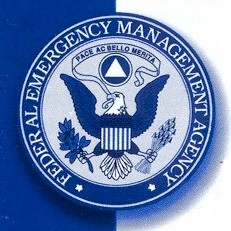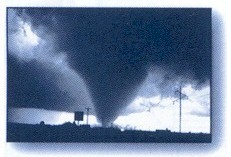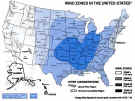|
Taking Shelter From the Storm: Building a Safe Room Inside Your House Extreme windstorms such as tornadoes and hurricanes pose a serious threat to buildings and their occupants in many areas of the United States. Tornadoes strong enough to damage roofs, destroy mobile homes, snap or uproot large trees, and turn debris into damaging windborne missiles have occurred in virtually every state. Hurricanes have affected all Atlantic and Gulf of Mexico coastal areas in the United States, including Puerto Rico and the U.S. Virgin Islands. Hawaii has also been affected by hurricanes. Even states not normally considered susceptible to extreme windstorms include areas threatened by dangerous high winds. these areas, typically near mountain ranges, include the Pacific Northwest coast.
|
Do You Need a Shelter? The wind zone map on this page shows how the frequency and strength of extreme windstorms vary across the United States. This map is based on 40 years of tornado history. Zone IV, the darkest area on the map, has experienced both the greatest number of tornadoes and the strongest tornadoes. As shown by the map key, wind speeds in Zone IV can be as high as 250 mph. The tornado hazard in Zone III, while not as great as in Zone IV, is still significant. In addition to Zone III includes coastal areas susceptible to hurricanes. (Click on Wind Map for a Larger View) Your house was probably built in accordance with local building codes that consider effects of minimum design winds. These are winds that, according to building code requirements, your house must be able to withstand. However, a tornado or hurricane can often cause winds much greater than those on which local building code requirements are based. Your house may be built "to code", but that does not mean that it can withstand winds from extreme events. If you are concerned about wind hazards where you live, especially if you live in Wind Zone III or IV, you should consider building a shelter. |
Basis
of Shelter Design
The purpose of a wind shelter is to provide a space where you and your family can survive a tornado or hurricane with little or no injury. You can build a shelter in one of several places in your house - in your basement, beneath a concrete slab-on-grade foundation or garage floor, or in an interior room on the first floor. Shelters built below ground level provide the greatest protection, but a shelter built in a first-floor interior room can also provide the necessary protection. Emergency response personnel and people cleaning up after tornadoes have often found an interior room of a severely damaged house still standing when little of the house remains above ground.
To protect its occupants, an in-house shelter must be able to withstand the forces exerted by high winds and remain standing, even if the rest of the house is severely damaged. Therefore:
|
||
 Back
Back


